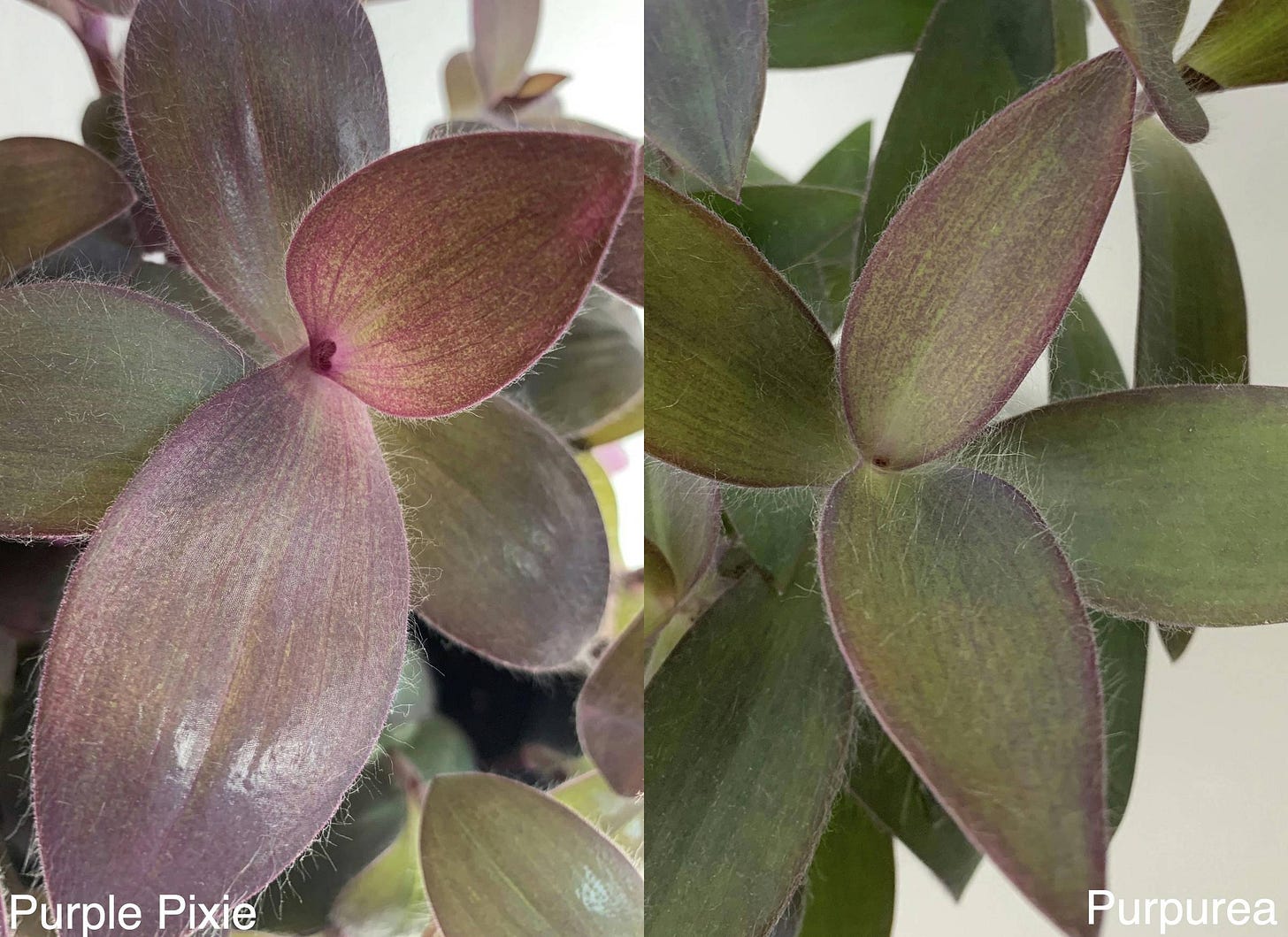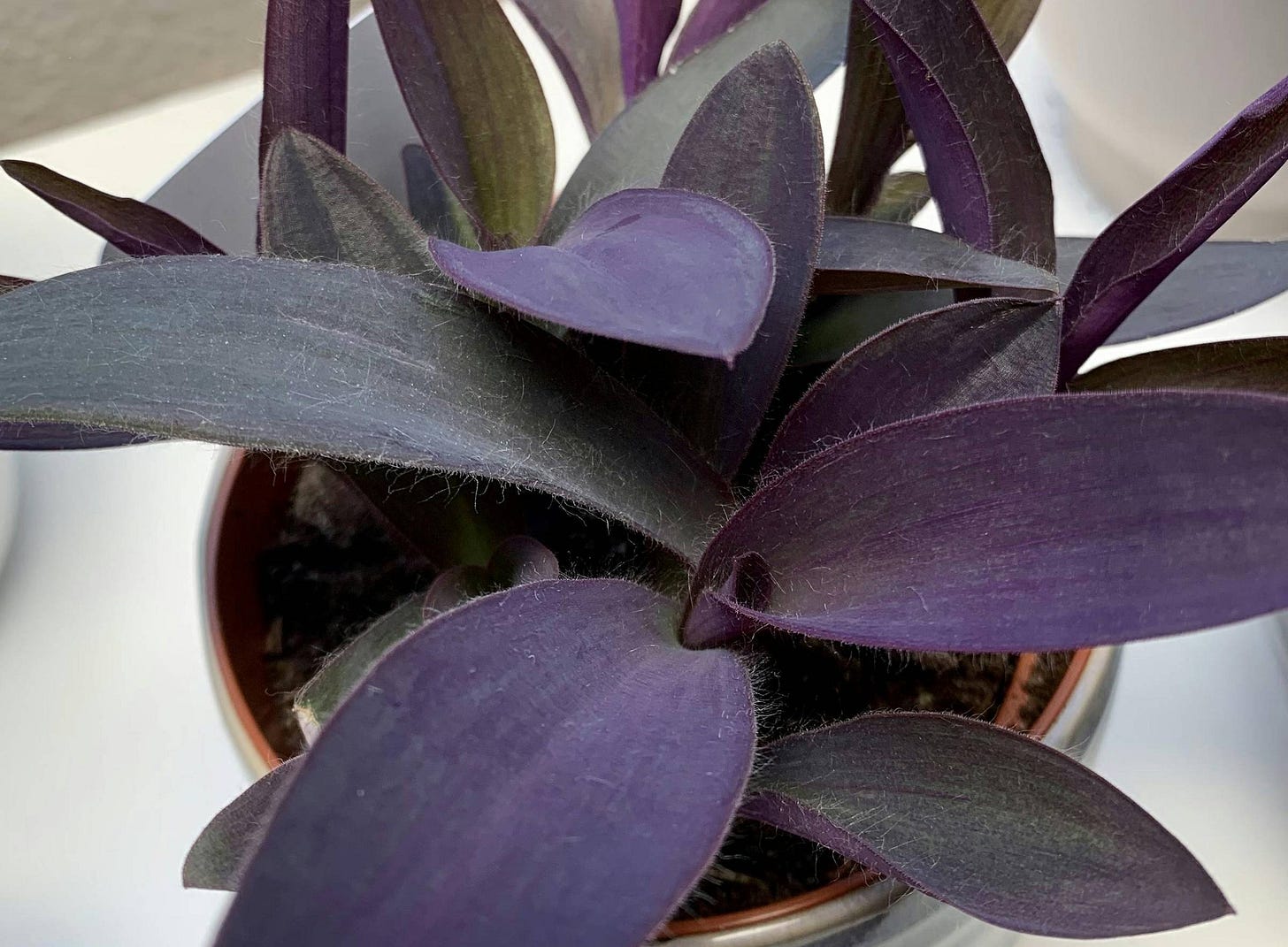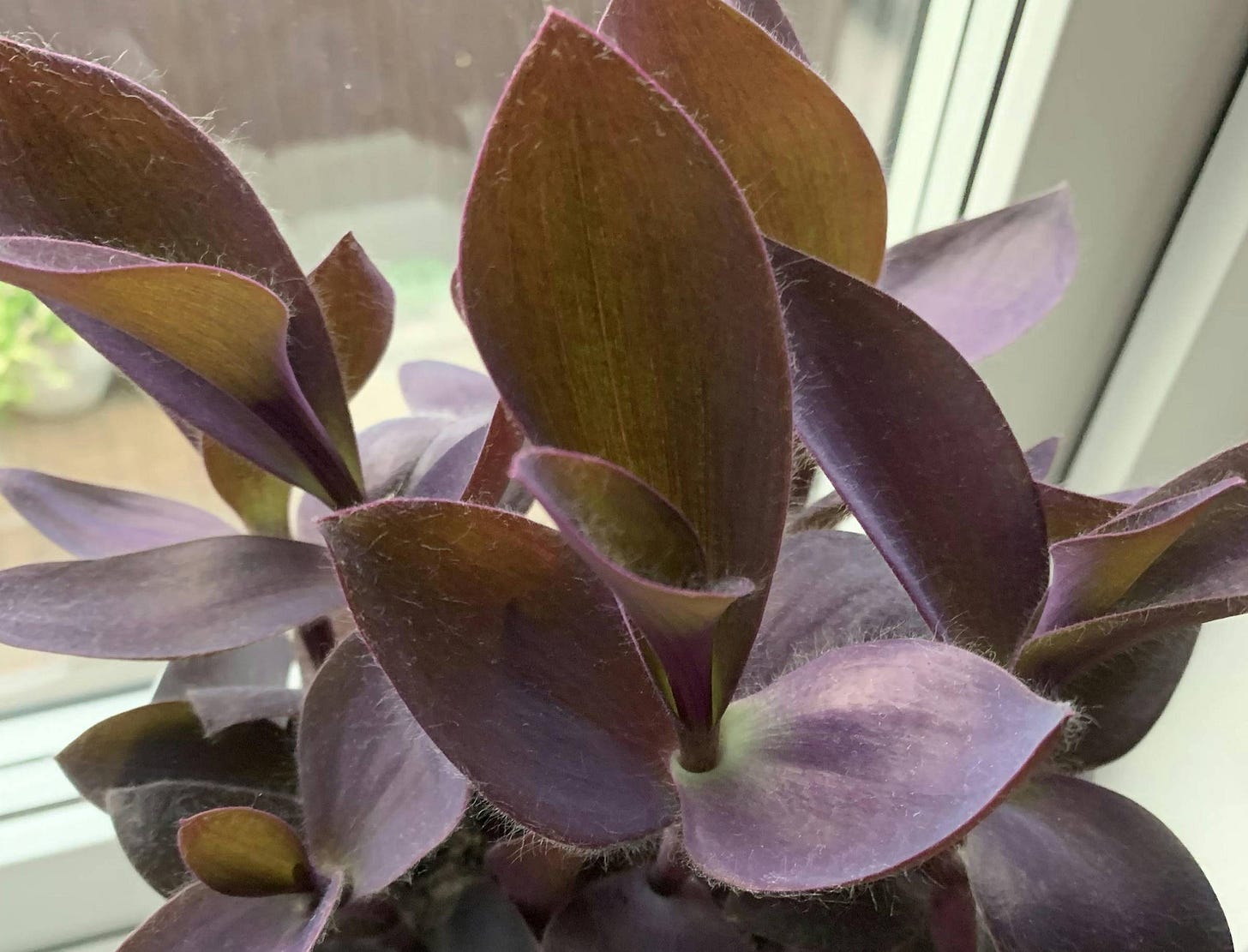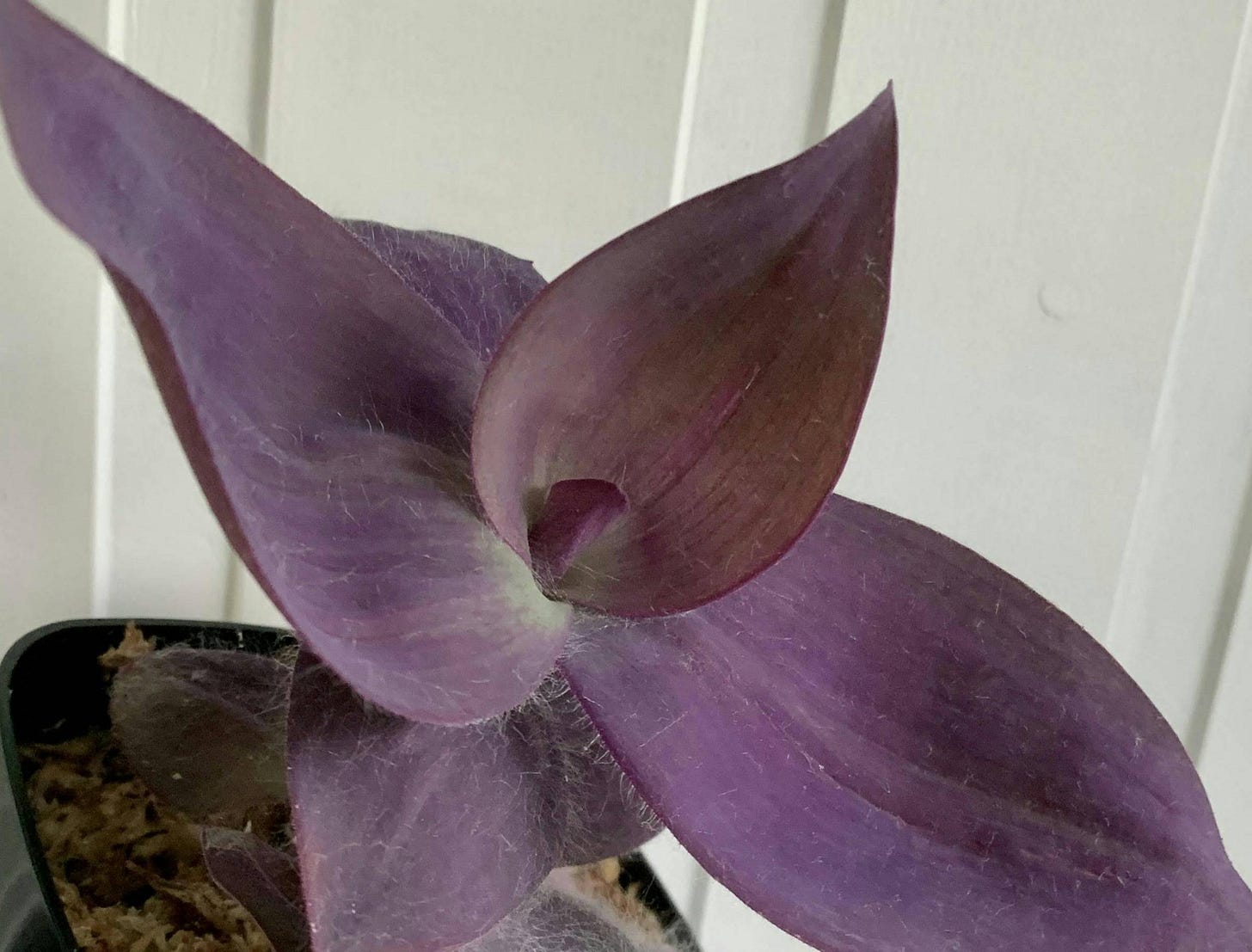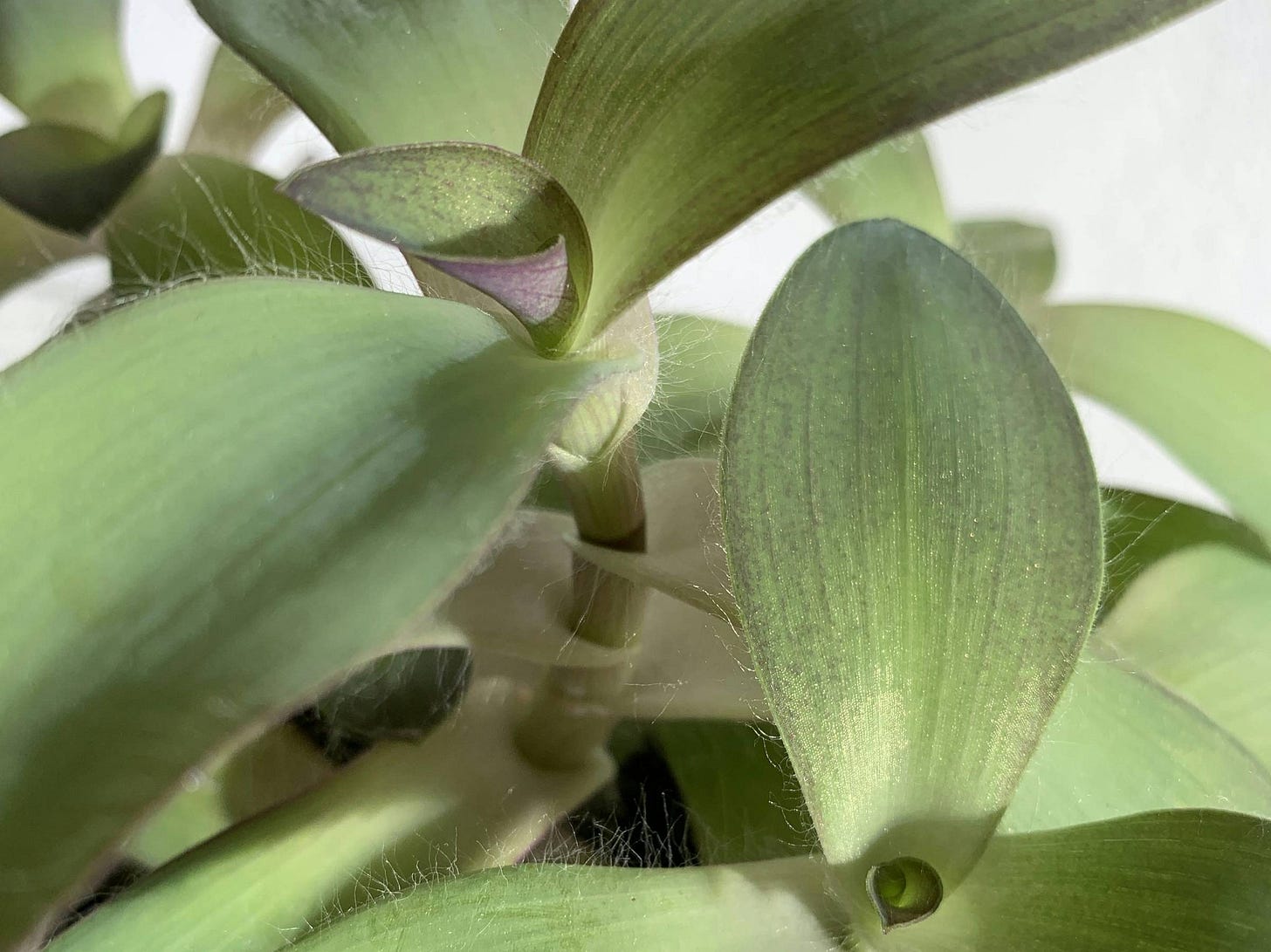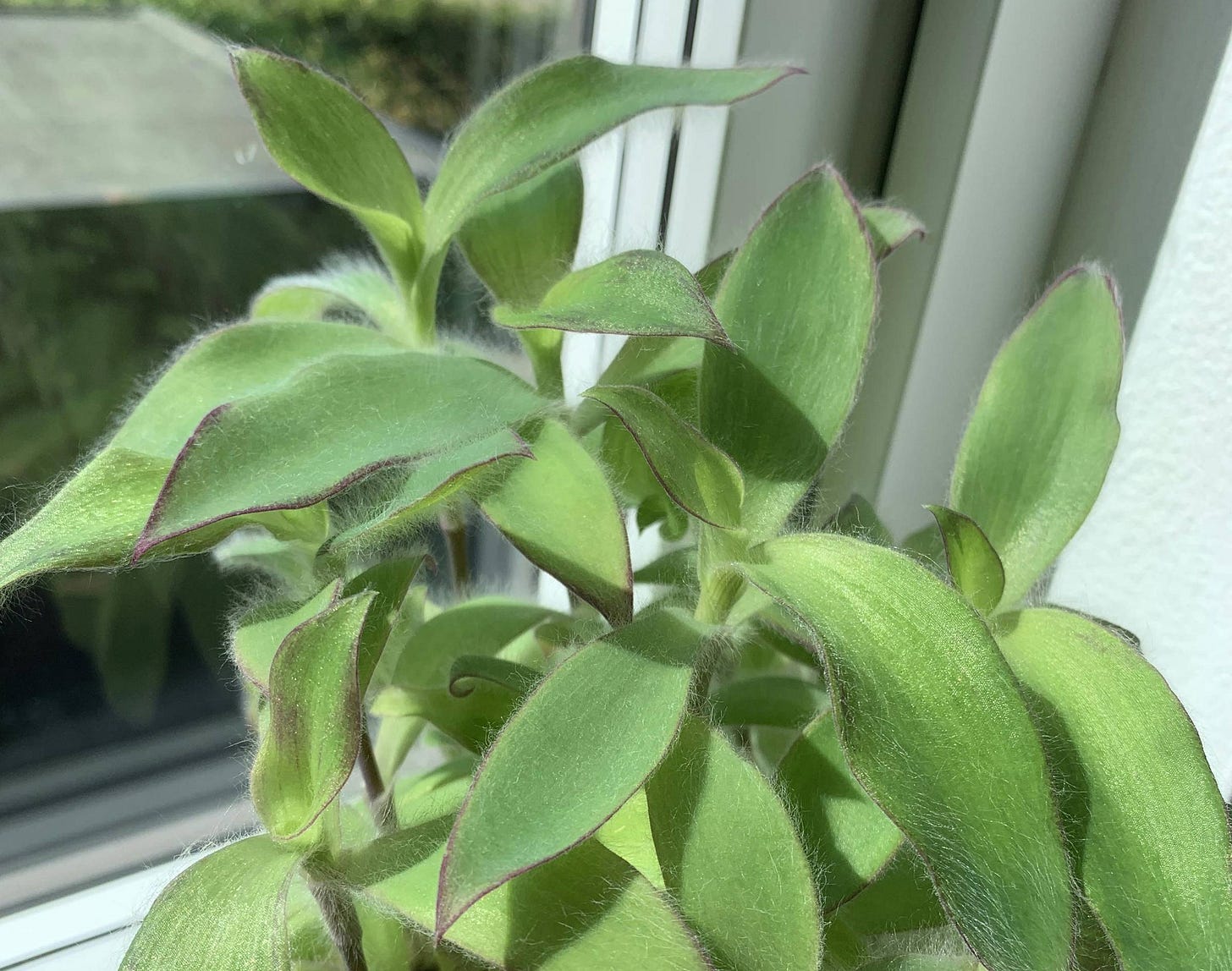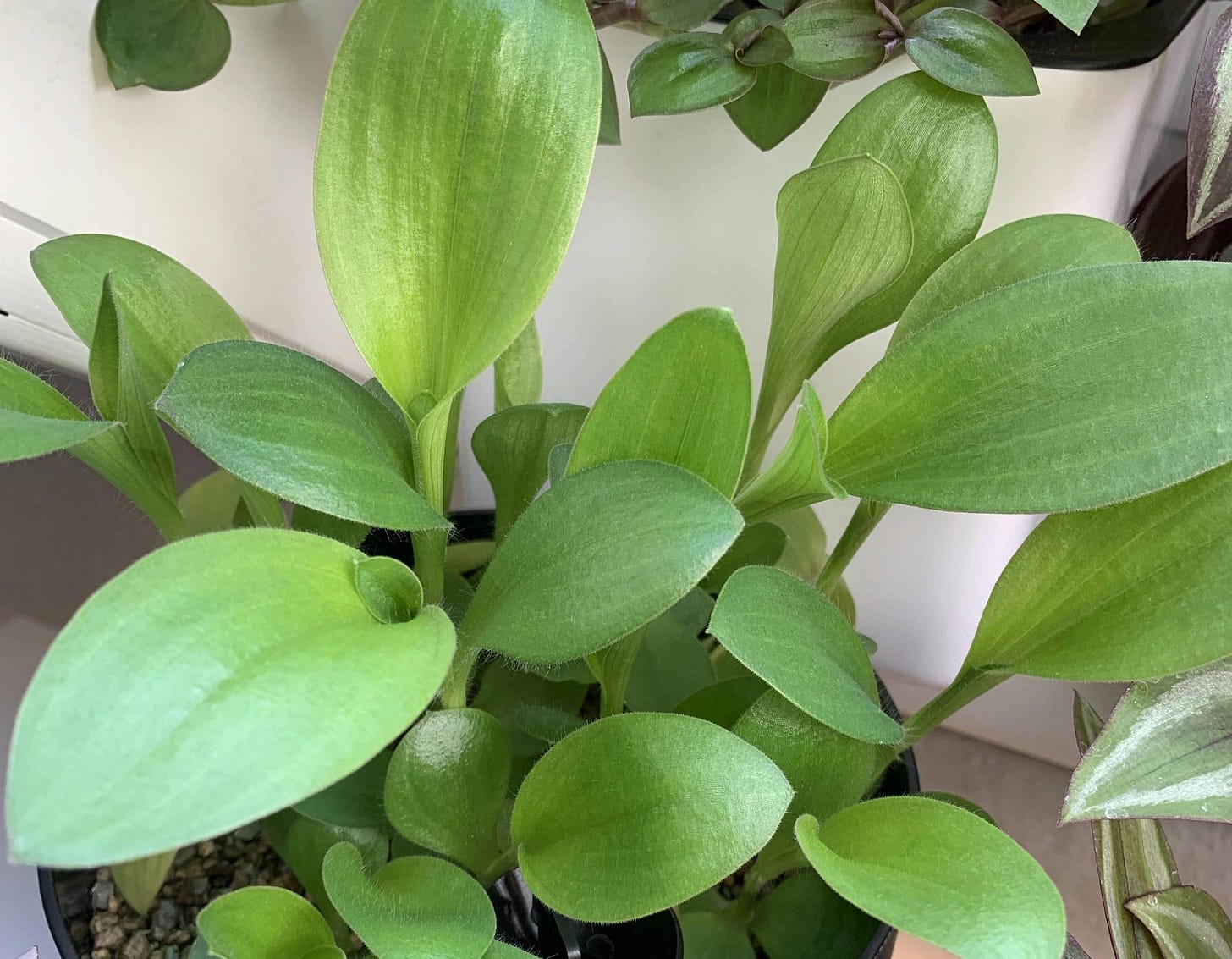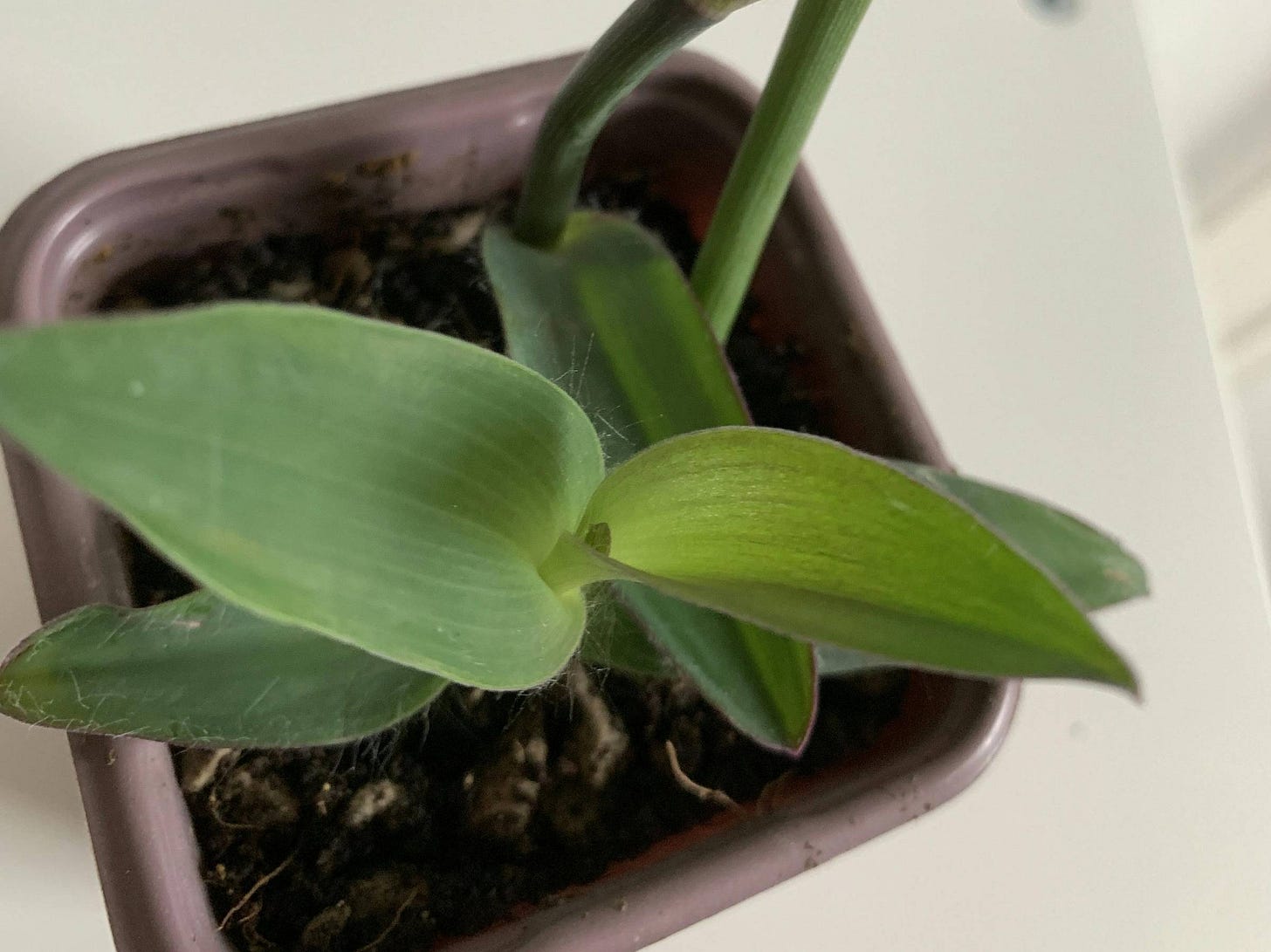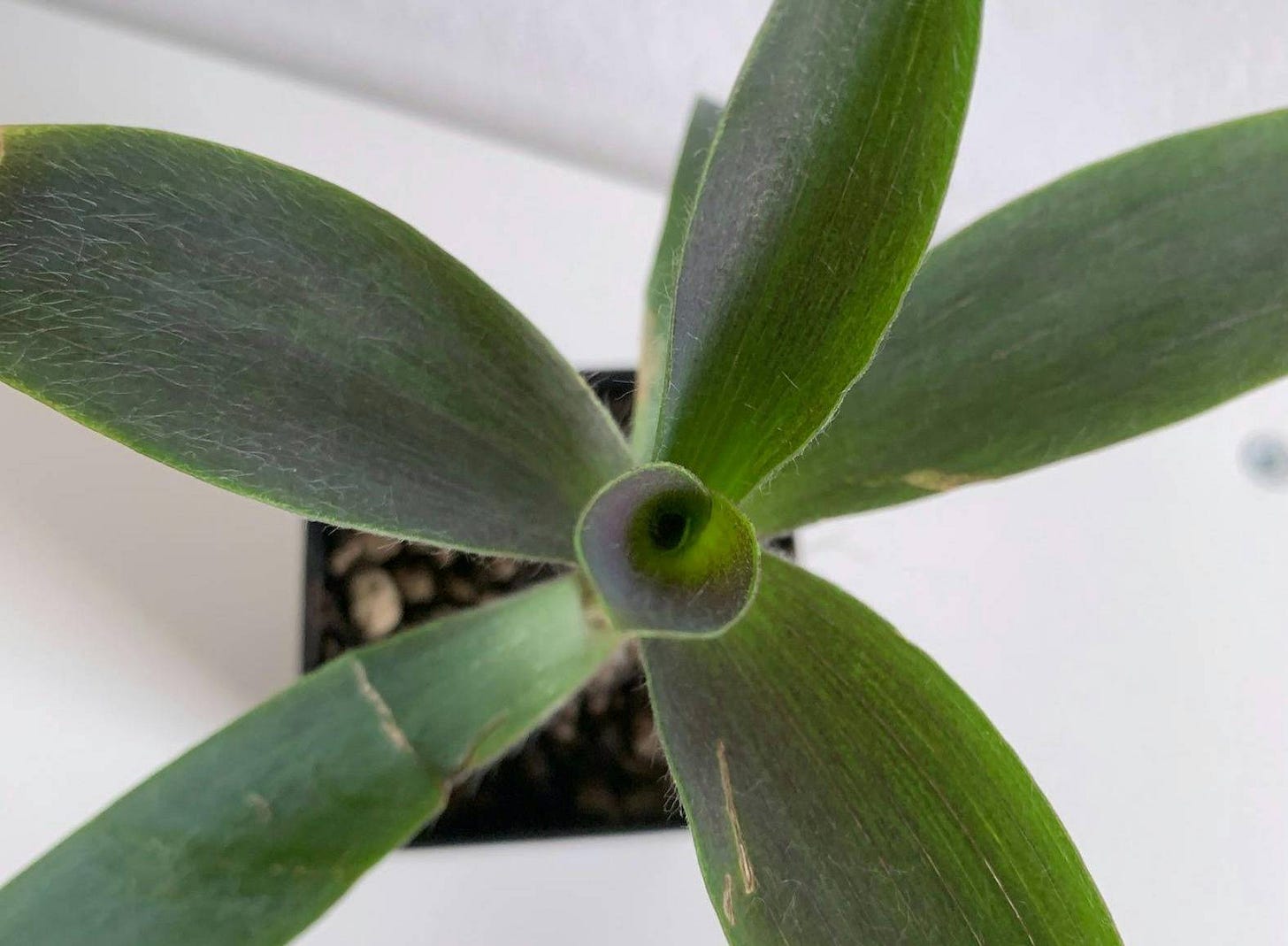Tradescantia Pallida: and Why There Is No Purple Heart
Tradescantias are sun-loving plants, and most of them thrive in full sun, so they should be quite happy with the long, sunny days we have right now. But there’s one species in particular that absolutely loves the sun—Tradescantia Pallida.
You might have heard Pallida mentioned before, but do you know what it stands for?
It’s a Tradescantia species known for its cultivars with thick, upright stems and large, tough leaves. These plants are resilient to dry conditions, and you can often see the purple varieties thriving outdoors in sunny spots in warmer countries.
The most common cultivar by far is ‘Purpurea,’ which has beautiful purple leaves and has been around since the 1950s. But did you know there are eight other stunning varieties too?
Is there a Purple Heart?
If you’re wondering why ‘Purple Heart’ isn’t listed as a cultivar here, it’s because it’s not an accepted name for a specific cultivar. ‘Purple Heart’ can refer to two different cultivars: either Purpurea or Purple Pixie.
The difference between Purpurea and Purple Pixie is in their leaf shape and colour. Purpurea has longer and narrower leaves with a more gray-greenish purple colour, while Purple Pixie, which has been around for about a decade, has shorter and broader leaves with a deeper purple colour.
Pallida Purpurea
Pallida Purple Pixie
Pallida Kartuz Giant
Pallida Pink Stripe
Pallida Blue Sue
Pallida Ocampo White
Pallida Jade King
Pallida Green Moon
Pallida Shadow Hill
I hope you enjoyed learning about Tradescantia Pallida and its beautiful varieties.
Thank you for reading! If you have any questions, feel free to send me a DM on Instagram. If you haven’t already, make sure to subscribe so you don’t miss out on future newsletters.
Stay tuned and happy planting!
Katja


